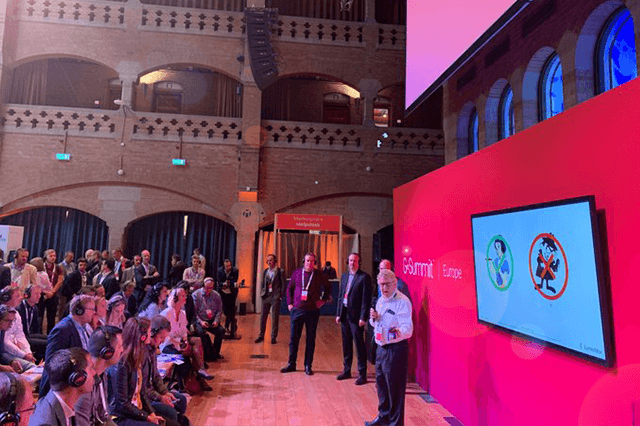LumenVox Luminaries is a podcast that broadcasts thought leadership pieces on the subject of voice technology. Today LumenVox Luminaries is proud to present Bettina Stearn with her thoughts on what’s trending in Voice Biometrics today. Bettina has been a part of the industry since 2002, acting as a pre-sales engineer, and now as Managing Director of LumenVox’ European team. The LumenVox team is excited to be attending Call and Contact Centre Expo in London, March 18-19, stand 2061, where we”ll be talking to attendees directly about our solutions and presenting “Using Voice Biometrics in the Contact Center: A Primer,” March 18 at 11:45 am in Theatre 10. Make sure to say hi to them there, or connect with Bettina via LinkedIn here: https://www.linkedin.com/in/bettina-stearn-84b6a816/
Listen to the Podcast
Read the Transcript
What’s trending in voice biometrics?
The most trending (technology) in voice biometrics currently is definitely multifactor authentication. Multifactor authentication consists of 3 different factors, the first factor is something you have, like your phone. The second is something you know, like your PIN. The third is something you are, this can be biometrics or in a special case, voice biometrics.
What’s special about voice biometrics?
The special thing about voice biometrics is that you don’t need anything extra, other than your phone. You always have your microphone with you, and you can record your voice. With a lot of other biometrics this is much more difficult, for example, an iris scanner or fingerprint scanner you don’t always have with you. So you can use your voice much more easily.
How are businesses adopting this type of authentication?
We can see now that the businesses are adopting this; one or two years ago it was still very slow. But now we can see it’s really accelerating because of (the need required by) new regulations. The governments are forcing financial institutions, for example to add multifactor authentication.
How does LumenVox help with adopting this method of authentication?
We make it somewhat easy to do this because we will integrate it into the existing infrastructure of the enterprises. So we would help and consult with the enterprise (to determine) where to add multifactor. And there’s seamless integration. We will provide a lot of APIs and interfaces to make it as smooth as possible.
What sets LumenVox apart from others in the Voice Biometrics field?
I think the special thing is that all of our technology around voice biometrics is our own proprietary technology. This is rare in the industry, the big competitors are using third-party system integrators. But LumenVox really has its own technology stack. This makes it easy for us, LumenVox, to go deep into the code and to really tailor it exactly to the customer. We can change everything. We own the code, so this makes it easy for us.
I think the other interesting thing at the moment–what we can see in the market, what we’re developing and releasing currently–is the passive voice authentication that helps fraud detection. We have a nice, new product, addressing this, Fraud Scanner. We can create imposter lists and help the enterprises to look for imposters and address the fraud.
What’s the definition of Passive, exactly?
Passive means that in a natural dialogue the dialogue between the agent and the user can be recorded and offline an enrollment will be created. So the user is not actively doing an enrollment, and he doesn’t even know it (is happening). Of course we can inform him before, but the enrollment can be done in the background, so when the user calls the second time, the call center agent can retrieve the enrollment of the person and he knows, then, the person is already enrolled. And he can then start checking the authentication of the person.
Anything else on your mind about Voice Biometrics?
I think Voice Biometrics has been on the market for twenty years. But now we can see it’s like a rocket start at the moment because the demand is growing, so I think the time is now for Voice Biometrics.





